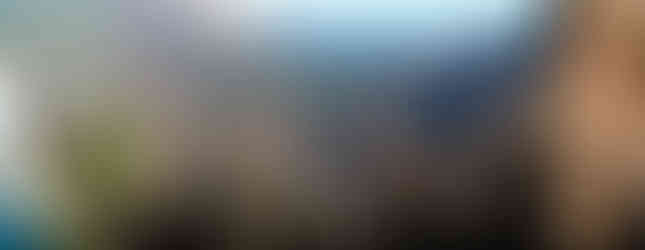I haven't taken the time to write about this wonderful opportunity, given to me by work. It was right before the holidays, and I went home to the states for a few weeks to spend some much needed time with friends and family, and it slipped my mind. Anyway, I apologize for the delay, and I present the tale of an adventurous three days spent exploring different sites in and around Gangwon.
The fully paid-for by work excursion began with me getting lost. I could not find the shuttle bus outside Yongsan Station, and it doesn't help that there are about 1,000 exits and entrances to that place. Once I saw the 'shuttle' I realized that it was actually more of a private van. UPGRADE! Myself and three of my coworkers loaded in to find snacks, water, and visitor's brochures for each destination. Our driver, Mr. No (not to be confused with the James Bond villain), was slightly the scariest driver I've encountered thus far in Korea skill wise, but he meant well and was very kind to us the entire trip.
It took about 2.5 hours NE to reach our first destination from Seoul. We started at the Woljeongsa Temple, a part of South Korea’s Odaesan National Park. The temple, first built in 643 CE by Jajang, a Silla Dynasty Monk, has been destroyed many times. In 1377 and 1833, several buildings burnt down, and more recently, the temple was ravaged in the 1950s as collateral of the Korean War. It was restored in 1964 and has since undergone many reconstructions and transformed into the peaceful temple complex it is today. It's surrounded by forest and mountain range, and is a beautiful site to see. The park's name "Odaesan" means "Five Plains Mountain," named after the five high plains between its five major peaks.
Walking from the temple, you can choose to take the path down Fir Forest Road which circles back to the front of the park. Some of the Fir Trees are believed to be over 600 years old. We had a nice outdoor picnic lunch, and then drove to our next site for the day.
Sky Ranch was exactly what it sounded like. A ranch farm hidden in the mountains that featured hiking trails, a petting zoo of farm animals, and fields of horses. We spent time feeding a LOT of excitable goats hay, and made a real connection with some white cattle (which are believed to symbolize good luck by the Koreans). We had some freshly made dairy ice cream, and just enjoyed the sunshine.
Our final stop on day one was the Olympic Memorial Hall, home to the 2018 PyeongChang Winter Olympic Games. They have displays features puppets from the opening ceremonies, donated outfits from athletes, and even a medal display. Everything was very impressive and well preserved including a rooftop view of the Olympic Rings and Torch symbols.
After a buffet dinner and a good night's rest at the Yangyang Sol Beach Hotel, it was off to day two at Seoraksan National Park. We started off with a ride in the famous Seorak Cable Car, and took in the morning sun from the overlook. I face-timed with my parents so they could see the impressive view. The park is located in the most northeastern corner of South Korea, just inland from the coast and Sea of Japan. It has the distinction of being declared the first national park for South Korea in 1970. The park also features several memorials and statues including one for the Korean War, and two separate temples.
Our next stop for day two was something our group was super excited for. The Unification Observatory and the DMZ Museum. We got to have another picnic lunch next to an old North Korean subway car diner, and then climb a very steep hill up to the tower. There were some fun sightseeing lenses for tourist use, several floors overlooking the DMZ beaches, and it was even possible to use my camera to zoom in on a North Korean watch tower. The small Korean War display, followed by the DMZ Museum were both educational and made excellent use of interactive displays. I wish we had more time there.
The final day two stop was former North Korean Leader Kim, Il-Sung’s villa
& Hwajinpo Beach. At this point we were over stairs and steep hills, our legs could not handle anymore. We browsed both locations and told our driver to call it an afternoon. We were eager for rest, relaxation, and another hotel buffet dinner. One of my new friends from the trip, Leah, and I decided to visit the hotel pool and sauna. That is a tale for another time, but the end of day two may have scarred me for life. Just joking... or am I?!
Our final day, day 3, luckily gave us a bit of time to sleep in. It was much needed. We enjoyed our final breakfast buffet at the hotel, and journeyed to Naksansa Temple. Naksansa or Naksan Temple is a Korean Buddhist temple complex, in the Jogye order of Korean Buddhism, that stands on the slopes of Naksan Mountain (also called "Obongsan Mountain"). It has a spectacular view of the Sea of Japan. We wrote down are wishes at the main temple hall, and hiked up to the top Mount Naksan to view the Buddhist statue of Haesugwaneumsang (해수관음입상, Bodhisattva of Mercy), known as the goddess Gwanseum-Bosal. The statue stands at 15 meters (49 feet) high on a 2.8-meter (9.2 ft) high pedestal, eyes and fingers closed in peaceful meditation as it gazes out to sea.
Most of Naksansa was destroyed by a fire that started in the surrounding forest on April 5, 2005. The Naksansa bronze bell, a national treasure dated back to the 15th century, was also melted and destroyed in the fire. The remains are displayed on the grounds, and a replica was built to replace the bell in its original structure. This temple was very peaceful, had a lot to see, and a very rich history. If you want to see a truly impressive temple in South Korea, I'd go here.
Our final stop of the trip was Ojukheon House. It showcases the lifestyle and architectural style of the early Joseon dynasty, and is one of the oldest preserved Korean houses. It was home to the Yulgok family, including the most prominent Korean Confucian scholar of the Joseon Dynasty, Yi I (whose image is on the South Korean 5,000 Won note), and his mother Shin Saimdang (whose image is on the 50,000 Won note).
We had our final picnic lunch box, and may I say the most delicious of the three days, and then completes our 2+ hour drive back to Seoul. Due to COVID, my work has been limited on how many cultural trips they can offer, but based on this experience and the vast array of sites I got to see, I can't wait to sign up for another!















































Comentários